Bringing grouper and lobster to "escape the storm"
Since dawn, lobster farmers in O Loan commune have pulled their cages ashore, scooped up the lobsters, put them in foam boxes with oxygen, and transported them to Vung Ro for storage. Mr. Nguyen Ngan, a lobster farmer in O Loan commune, said: “Previously, people raised them with “ganh”, meaning they put plastic cans under the cages and clamped the sides to keep them floating, not sinking. But there were five cages that were thrown ashore, and everything was lost. This year, we proactively moved the lobsters to a safe place to reduce damage.”
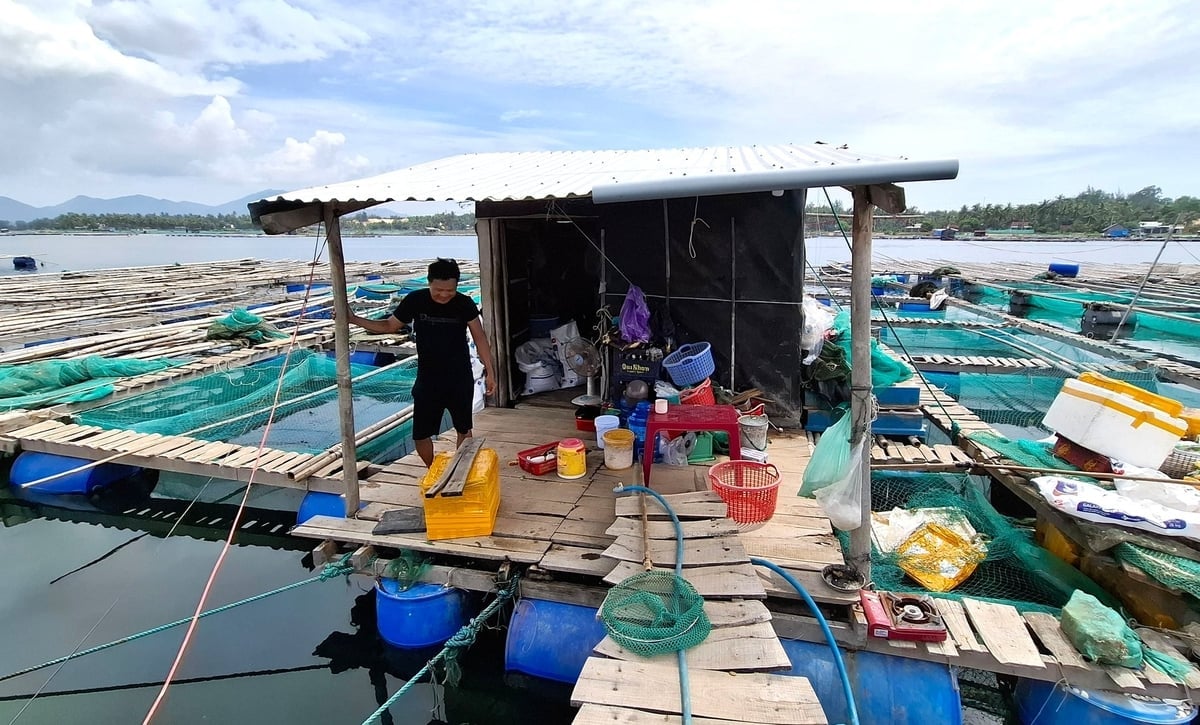
Shrimp farmers in Cu Mong lagoon, eastern Dak Lak province, scoop shrimp into foam boxes with oxygen. Photo: N.Ngan.

People in Dak Lak collect small grouper fish that have not been sold yet and put them in foam boxes to transport them to another place to avoid storm No. 13. Photo: N.Ngan.
At the same time, in Song Cau ward, Xuan Loc commune, people are urgently harvesting young lobsters and groupers raised in Cu Mong lagoon, Xuan Dai bay, even though they are not yet of saleable size. Local authorities have mobilized forces to support people in tying down cages, guiding them to lower the cages; and at the same time, supporting 102 fishing boats to safe shelters.
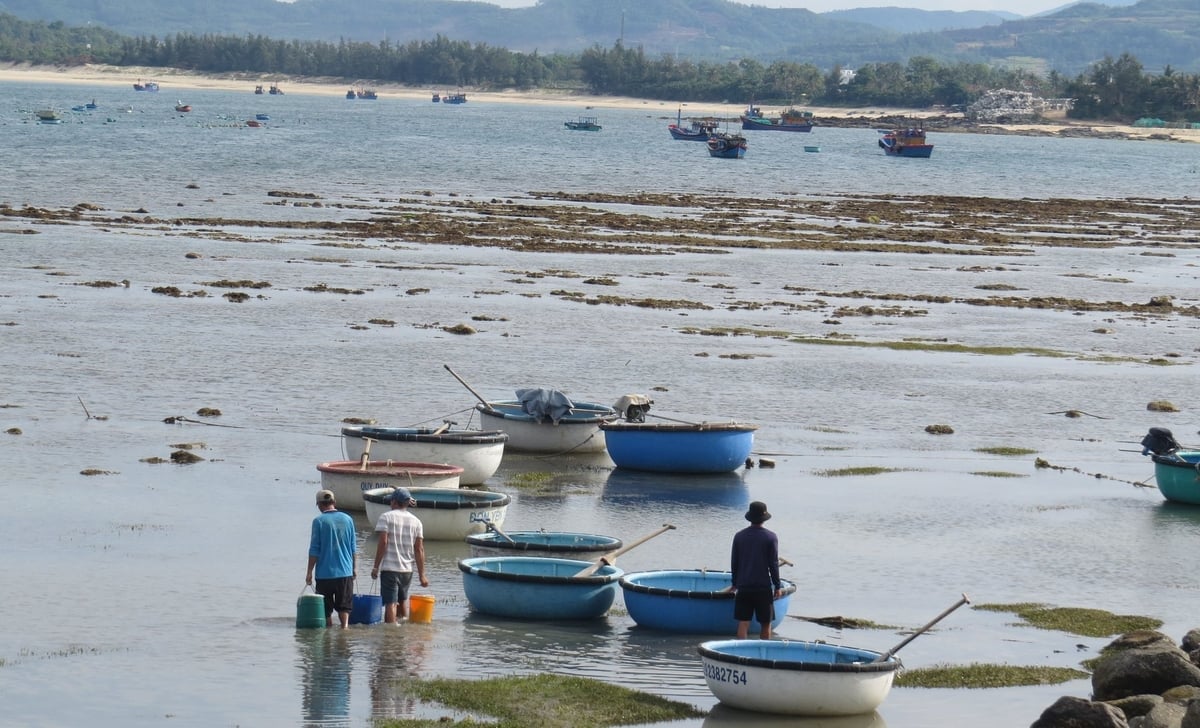
Farmers in O Loan commune proactively moved their cages to a safe place to minimize damage. Photo: Manh Hoai Nam.
In the south, Hoa Xuan commune is also preparing. Vung Ro area, where more than 600 cages and 1,000 workers are concentrated, has cleared the channel and arranged two anchorages. Up to now, 68 fishing boats with 170 workers have taken shelter from the storm, only 9 small boats are operating near the shore. The commune government has coordinated with the Border Guard Station at Vung Ro Port to arrange 3 temporary shelters at the Border Guard Station, Border Control Station and Commune Police Headquarters, with a capacity of more than 200 people.
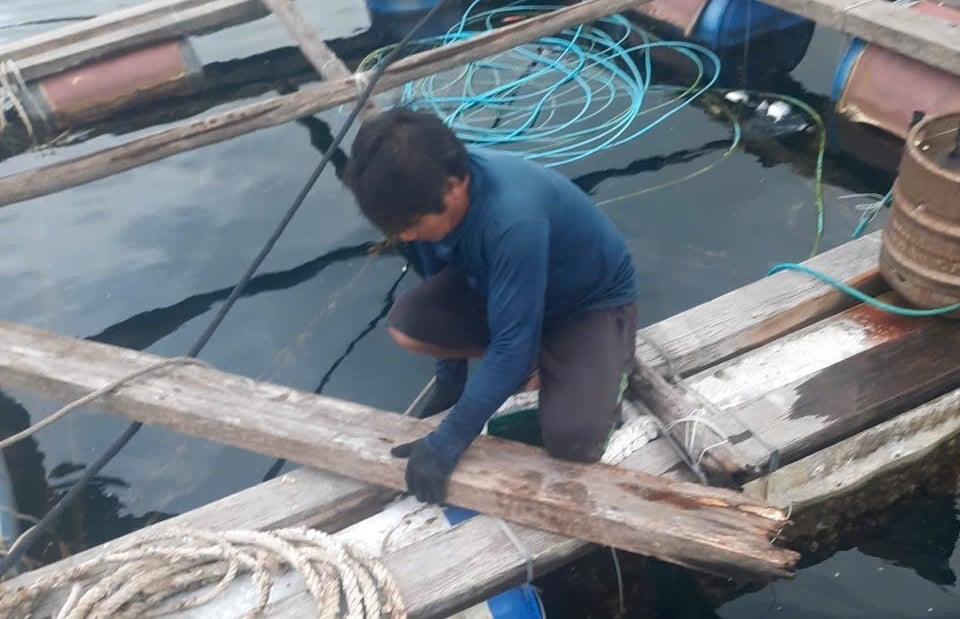
Shrimp farmers in Vung Ro Bay reinforce their cages to prevent them from being blown away by storms. Photo: Tran Lan.
Mr. Tran Van Lan, a shrimp farmer in Vung Ro Bay, said: Farmers reinforce cages and prepare boats to move when there are big waves.
Mr. Hoang Anh Tuan, Chairman of the People's Committee of Hoa Xuan Commune, said: "The commune has established a Civil Defense Command Committee and 13 shock teams in 13 villages, directly following the area, supporting people to respond promptly."
Concerns about dike and dam degradation
Due to the impact of storm No. 13, Bach Dang embankment (Tuy Hoa ward) was hit by waves that eroded deep into the road, threatening the residential area. Local authorities surrounded it with corrugated iron to prevent the waves from hitting. Ms. Tran Thi Phu, who lives near the embankment, said: "The strong waves threaten the residential area. During the rainy and stormy days, my family did not dare to sleep at night."
According to the Department of Agriculture and Environment of Dak Lak province, in the eastern part of Dak Lak (formerly Phu Yen province), there are two seriously damaged embankment works: Bach Dang embankment (3.546km long) and the southern embankment of Da Rang river (about 2km long), with a total repair capital need of about 250 billion VND. Dak Lak requested the Central Government to continue to allocate priority capital to repair and upgrade damaged works.

Bach Dang embankment, Tuy Hoa ward was eroded by waves, threatening residential areas. Photo: Manh Hoai Nam.
In response to the developments of storm No. 13, the People's Committee of Dak Lak province requested dam management units such as Dak Lak Irrigation Works Management Company Limited, Dong Cam Irrigation, coffee enterprises and hydropower reservoir owners to increase monitoring of water levels, operate according to procedures, and ensure safety of works and downstream areas.
Previously, the Department of Agriculture and Environment of Dak Lak province directed the Department of Irrigation and Natural Disaster Prevention and Control to coordinate with localities to review and assess the current status of lakes and dams. According to statistics, the whole province has 1,208 irrigation works, including 676 reservoirs, 286 dams, 244 pumping stations and 2 dyke systems. Of which, many works have degraded, posing a potential risk of insecurity during the 2025 flood season. Specifically, the western area of the province (old Dak Lak) has 131 damaged and degraded works, requiring about 1,031 billion VND in repair costs.
Source: https://nongnghiepmoitruong.vn/nguoi-nuoi-trong-thuy-san-dak-lak-chay-nuoc-rut-ung-pho-bao-so-13-d782367.html



![[Photo] Opening of the 14th Conference of the 13th Party Central Committee](https://vphoto.vietnam.vn/thumb/1200x675/vietnam/resource/IMAGE/2025/11/05/1762310995216_a5-bnd-5742-5255-jpg.webp)




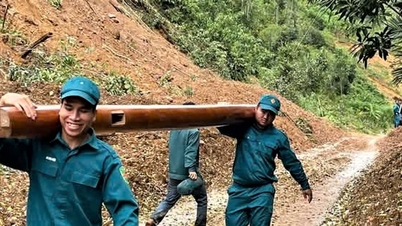







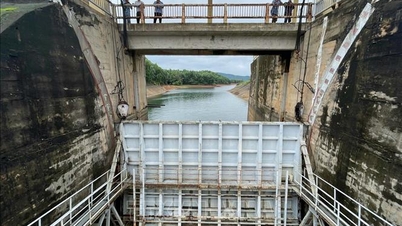

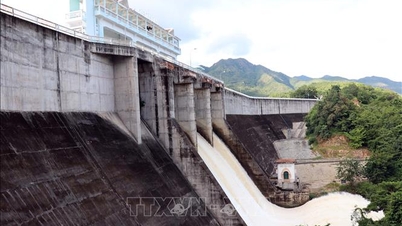
















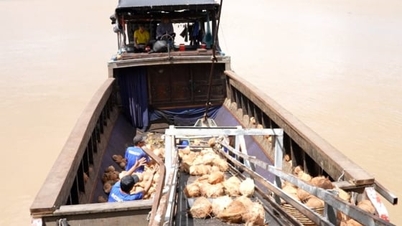
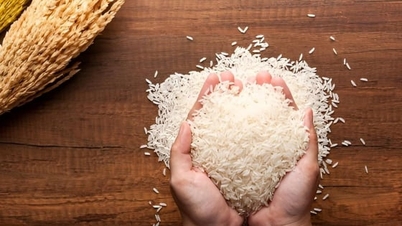

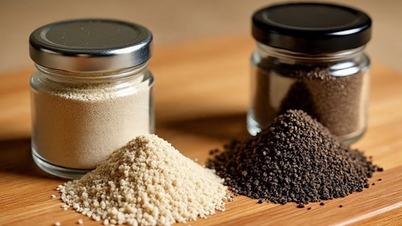


![[Photo] Panorama of the Patriotic Emulation Congress of Nhan Dan Newspaper for the period 2025-2030](https://vphoto.vietnam.vn/thumb/1200x675/vietnam/resource/IMAGE/2025/11/04/1762252775462_ndo_br_dhthiduayeuncbaond-6125-jpg.webp)





































































Comment (0)